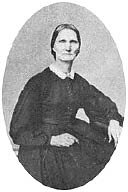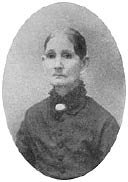
Discover rewarding casino experiences. 
|
We were advised by them to collect together as many as possible and stand our ground and defend each other; so after spending and consulting together we hid the heavy property as best we could then my father loaded up the wagon and we started for Ottawa. We met Mr. Davis who lived about two and a half miles west of us and who had been to Ottawa the previous day. He had learned that a company had gone out in a northerly direction to learn what they could about the Indians to then report to Mr. Davis in case of danger. My dear father was prevailed upon by Mr. Davis not retreat but to stop at Davis where the Pettigrew, Mr. Hower and son, John Henderson and two men. Davis had hired Robert Norris and Henry George, were all there. On the (21st) day of May, myself and dear father were working under a shed adjoining the blacksmith shop ... Davis and Norris were at work in the shop. Henry George and Will Davis, Jr. were at work on the mill dam, a little south of the shop. It being a very warm day someone brought a bucket of cool water from the spring to the shop and we all went into the shop to rest a few minutes and quench our thirst...” So wrote John W. Hall, brother of Sylvia and Rachel Hall, the sisters kidnapped the day of the massacre in 1832. IT WAS WRITTEN in 1867 along with reminiscences of the sisters but for what purpose is not clear. It was thirty-five years after the incident. An interview had been taken from the sisters in 1834 to be used at the Circuit Court trial in Ottawa bringing charges against the three Indians allegedly responsible for setting off the massacre. To-qua-mee and Co-mec were the Potawatomis in charge of the raid. Those two had tried to purchase the girls from Mr. Hall for brides, he always opposed. It was they who selectively took the girls from the Davis homestead and led them away. It could be guessed that was their purpose that day but in light of subsequent events another idea could have ruled the situation. It was undertaken within a short time of the kidnapping. Ransom. Those memory -filled statements in 1867 for whatever purpose must have brought many a chill through the three Halls. The sister’s husbands wrote out the narrative and witnessed that of the brother. Sylvia Hall in the spring of 1833, in May, married William Horn, a Methodist Episcopal minister whose father, Rev. Reddick Horn was a well-known wilderness preacher and who had written the sisters during their “captivity” telling them they could come live with his family as long as needed. They, too, had entrusted the money purse to him; that collected from the generosity of the people of St. Louis. Due to William Horn’s profession they moved a lot and were living in Nemaha County, Nebraska in 1867. PDQ Me did not search for any mention, if there was any, of their being any psychological damage incurred by the sisters because of the anxiety-ridden days they spent as captives. Today’s newspapers should be filled with sensational speculation at least. In the 1830’s there were even headlines on the front page!! One statement somewhere only reported, “She suffered from nervousness.” But then Sylvia and husband, William Munson, had seven children! Sylvia died at age 86. Rachel Hall had also married in the spring of 1833, March, to William Munson, a farmer who had migrated to Illinois from Indiana. He ultimately bought the Hall homestead claim and soon it was burgeoning with laughter; they had seven children also. Munson platted the town of “Munson” in 1837 in Freedom Township, LaSalle County, Illinois and was the first to erect a monument on the property in observance of the terrible Big Indian Creek massacre. Rachel died in 1870, age 57. Although some of the Black Hawk War papers and letters pass over the possibility of people gathering in curiosity when the sisters appeared following their release it is merely slight suggestion. None of the graphic detail or supposition as today. The photos here of Sylvia and Rachel Hall in their mature years is taken from Frank Stevens’ book, 1903. Brother John W. Hall, having escaped the massacre at the Davis Settlement had made his way up Big Indian Creek as described before. In his hasty retreat he overtook John Henderson making his way also to Ottawa and the fort. Together they came upon Mr. Howard and son, the three Davis boys and two of his brothers, Edward and Greenberry. A somber reunion as they compared stories. John Hall had dashed around the shed and was but three paces from an Indian on the charge. He turned to run. He hears a whispered prayer and glanced to his right. There lay his father shot in the left breast. Running past him was the senior Davis with a gun held close. He yelled at John, “Take care,” and went on where in the distance he was later discovered, dead. When the Settlement group reached to fort at Ottawa to warn those there, they immediately formed a company to return to the site of the massacre to bury the dead and learn some idea of which way the Indians had gone. Three of Hall’s sisters were in the house sewing when the attack occurred. They all must have been murdered. Only later did John learn of the two being taken captive. They reached Indian Creek ... “and what a scene presented itself. Some had their hearts cut out and some cut and lacerated in too shocking a manner to mention or behold without shuddering. All the victims were buried in one grave without coffin, box or anything of the kind to remain till Gabriel’s trump shall take the nation’s under the ground and call to life the sleeping dead.” On their way to the Davis Settlement, the group from there had met some struggling survivors of Stillman’s defeat several days before. They dejected, had made no offer or effort to go with them to bury the dead. They were so sad as “were we.” In a very few more days the defeat of our men at Kellogg’s Old Station would add to the low morale of those in Northwest Illinois. When the Davis Settlement people returned to Ottawa they organized a company to track the Indians who’d taken the sisters and, hopefully, had not killed them. Two treks were necessary because the first ran low on provisions and had to backtrack to Ottawa for more supplies. John Hall had opportunity to confer with General Henry Atkinson, Commander of the American Army to request that money be paid to buy the sisters from the Indians. The General said that he’d already done that, that morning. The amount of money John suggested being just what General Atkinson had told the natives they would be paid. Hall was urging speed because he thought perhaps if they drew close to the party holding his sisters, they would be killed. At least two different papers remarked on the amount and that the “friendly” Winnebagoes approached the Sac and a few Fox who had taken them captive. As they marched they met General Henry Dodge who informed them that, indeed, the girls had already been purchased and were homeward bound having left Blue Mounds to Galena via White Oak Springs. Perhaps making the rendezvous between sisters and brother was easier to achieve because General Atkinson had ordered Hall’s company to march to Burr Oak Grove, or more familiarly, Kellogg’s Old Station to pick up a prisoner there who had stabbed a comrade and was to go to trial in Galena. This would set their trail through White Oak Springs where the sisters would linger unknowingly, until brother caught up with them. And, indeed, it was a poignant, somber, joyful reunion. All emotions were experienced. There is merely a brief line in the 1834 interview the sisters gave for the circuit court trial for the three main protagonists the day of massacre, none of whom were punished. A tick freed Toquame. He had a deep identifiable scar across his face so his lawyer had made him paint a colorful design over it to disguies the mark. The sisters couldn’t pick him out so he was let go. In two letters or papers of the Black Hawk War collection there are only a sentence concerning the ransom paid for the sisters. Perhaps it was a common amount at the time. No one in the military, at least, seemed shocked by the purse in exchange for the sisters, Sylvia and Rachel Hall. $1,000 each! At that time it would be a huge total. Next week — THE END.
|





